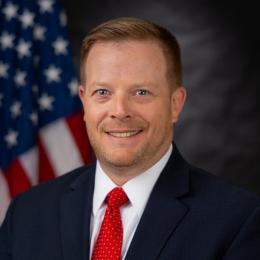Cheat Sheet
- Changed focus. The Biden administration has refocused EPA and DOJ enforcement priorities to address climate change and environmental justice in disadvantaged communities.
- Evaluate the circumstances. Corporate compliance leaders should reevaluate environmental risks to ensure the implementation of effective controls, including policies, procedures, and prioritized training to support leaders at their facilities.
- Know the difference. There are key differences between civil inspections and criminal investigations, and corporate counsel should ensure they are responding accordingly.
- Be comprehensive. Effective environmental compliance programs that include proactive training and auditing, a confidential reporting system, regular reassessment, and oversight and buy-in from senior company leaders, are the best way to prevent violations and mitigate potential civil or criminal liability.
Astute corporate legal and compliance leaders should be aware of significant shifts in national policy implemented by US President Biden's administration, which send a clear message that there is a renewed need to assess environmental risks, identify and remedy any potential violations of environmental laws, and implement baseline standard programs to ensure ongoing compliance.
This is particularly true with respect to operations in economically disadvantaged communities, which are likely to receive increased scrutiny, and potentially higher penalties, than in other areas of the country. Legal and compliance leaders should consider prioritizing areas of compliance effort to match the US Environmental Protection Agency (EPA) and the US Department of Justice’s (DOJ) focus on these communities.
This article describes those shifts in policy and examines associated enforcement trends in the context of the fundamentals of environmental law, with the intent to help companies prepare to respond to civil inspections and criminal investigations via the implementation of an effective and proactive environmental compliance program.
Recent policy direction
President Biden has issued several executive orders solidly focusing his administration on climate change and environmental justice (EJ), i.e., addressing the situation where low-income and minority communities bear the disproportionate burden of environmental pollution. Executive Order 14008 (Jan. 27, 2021) directed all agencies to incorporate EJ into their missions, programs, and policies. EO 14008 specifically directed the EPA, DOJ, and US Department of Health & Human Services (DHHS) to enforce these initiatives and to create the "Justice 40 Initiative" and a "Climate and Environmental Justice Screening Tool.”
EPA subsequently issued a directive to regional offices to integrate environmental justice into their plans and actions. EPA's Office of Enforcement & Compliance Assurance (OECA) then issued three implementing memoranda, which:
- Promoted the use of a broad array of enforcement tools, including the use of Supplemental Environmental Projects (SEPs) in administrative settlements;
- Called for increased community engagement, facility inspections, and enforcement in EJ communities; and
- Directed criminal investigators and attorneys to increase their focus on environmental crimes in EJ communities, including the increased use of sentencing enhancements (e.g., for "imminent and substantial endangerment") in these communities.
The Biden administration has backed these directives through both its appointments and budgeting priorities. The administration’s appointee to head OECA, David Uhlmann, spent 17 years as a federal prosecutor and served as the chief of the DOJ's Environmental Crimes Section and should be expected to direct his office to aggressively pursue criminal cases.
The Biden administration has backed these directives through both its appointments and budgeting priorities.
EPA's US$11.233 billion FY 2022 budget proposal represents over a 20 percent increase since 2020, as well as an additional 1,027 staff positions, including the establishment of an EJ-focused "Criminal Enforcement Task Force" in partnership with DOJ, with over 80 additional staff.
Similarly, DOJ would add 10 staff positions to address climate change and EJ, including a joint DOJ/EPA “Environmental Crime Victim Assistance Program.” It appears likely that DOJ will return to demanding "community service" payments to third-party organizations in connection with guilty pleas and other criminal resolutions.
Those payments were prohibited by then-Attorney General Jeff Sessions in 2017, but the associated implementing memorandum was recently withdrawn by the Justice Department's Environment & Natural Resources Division.
Recent enforcement cases
A cursory review of recent EPA enforcement announcements provide examples of the type of enforcement of core environmental statutes we should expect to continue in this administration, which have a significant impact on day-to-day operations of companies engaging in common industrial and commercial activity, including:
- Clean Air Act – Emissions defeat devices (commonly in diesel vehicles), General Duty Clause/Risk Management Plans (duty to prevent hazardous chemical accidents, manufacturing and transport), asbestos removal (typically in the context of construction demolition or property maintenance), sewage sludge incineration, fugitive particulate matter emissions (e.g., furnaces and cement manufacturing), and permit violations.
- Clean Water Act – Stormwater violations/lack of Stormwater Pollution Prevention Plans (SWPPPs construction), oil spill cases (lack of Spill Prevention, Control and Countermeasures (SPCC) plans and Facility Response Plans (FRPs)), filling of wetlands and water bodies, and permit violations.
- Toxic Substances Control Act (TSCA) – Lead paint/Renovation, Repair & Painting (RRP) Rule violations (construction, property management), and failure to submit required chemical reporting.
- Federal Insecticide, Fungicide, and Rodenticide Act (FIFRA) – Failure to register, use unapproved or inconsistent labeling, and use unapproved pesticidal claims (e.g., effectiveness against COVID-19).
- Resource Conservation & Recovery Act (RCRA) – Unlawful storage, transportation, or disposal of hazardous waste; and failure to comply with higher standards for "Large Quantity Generators" (construction, manufacturing, commercial operations, property management).
These types of cases lend themselves to rebranding to fit the new administration's priorities. For example, Clean Air Act cases might be characterized as climate change and/or EJ cases, and hazardous waste and Clean Water Act cases involving sewage overflows might be characterized as EJ cases.
Corporate risk assessments should assume an increased probability and impact for enforcement in these communities and enhance controls accordingly.
We should expect a higher percentage of enforcement in EJ communities and a greater tendency for EPA to refer cases to DOJ for judicial civil and criminal actions, instead of direct administrative enforcement by EPA. Corporate risk assessments should assume an increased probability and impact for enforcement in these communities and enhance controls accordingly.
Legal principles and policies
Corporate legal and compliance leaders should know that environmental crimes may be easier to prove than others and may transfer liability to the company and management regardless of whether there was actual knowledge of the violation.
First, most environmental crimes are "knowing" general intent public safety offenses, as opposed to "willful" specific intent offenses. That means that the government only needs to demonstrate that an offender was aware of the facts giving rise to the violation, rather than knowing that they were violating the law. While not quite a strict liability, it is close.
Second, companies can also be held liable for the actions of employees who act within the scope of their employment and for the benefit of the corporation (both broadly interpreted) under the doctrine of respondeat superior.
In addition, certain statutes, like the Clean Water Act and Clean Air Act, include "Responsible Corporate Officer" liability that holds managers criminally accountable where they could have prevented a violation but failed to do so.
It is not always easy to distinguish between a criminal environmental case and a civil one.
It is not always easy to distinguish between a criminal environmental case and a civil one. Criminal cases tend to involve lying, cheating, and stealing, and there are tactical advantages for the government to pursue civil cases over criminal ones, not the least of which is a lower burden of proof.
The government has broad enforcement discretion over whether to handle a case administratively within EPA or refer it to DOJ, whether to pursue a matter as a criminal or civil case (or both), and what charges to bring against whom in a criminal case.
DOJ and EPA policies provide guidance that can be useful to consider in developing a compliance approach, with common themes including the significance of the harm to human health or the environment, level of culpability, the existence of prior violations, whether violations are detected during compliance audits, whether violations are corrected and disclosed voluntarily, and the effectiveness of corporate compliance programs.
Statutory considerations and penalties
In-house counsel should be aware that potential civil and criminal penalties vary considerably depending on the underlying environmental statute. However, there are common factors typically applied to determine those penalties.
Criminal penalties for individuals can include imprisonment, significant fines, and restitution. Criminal penalties for companies typically involve several years of probation with various conditions and fines of up to US$1 million — or even more depending on the gain or loss resulting from the violation.
Corporate resolutions can also include "community service" payments and restitution. Criminal prosecutions are not necessarily resolved by guilty pleas and verdicts. Although uncommon, they can be resolved under certain circumstances through Non-Prosecution Agreements (NPAs) or Deferred Prosecution Agreements (DPAs).
For civil penalties, the maximum amount of the potential penalty increases with inflation, so the statute itself cannot be relied upon without reviewing annual update notices from EPA, the most recent of which was posted on Dec. 23, 2020 (85 Fed. Reg. 83818). Further, although EPA has a general penalty policy, there are supplemental policies for some specific statutes (e.g., RCRA, CAA tampering, CWA, etc.).
Responding to site inspections and enforcement actions
There are key distinctions between civil administrative inspections and criminal investigations.
Federal and state agencies have broad civil authority to inspect facilities, operations, and records related to environmental, health, and safety laws. Criminal investigators, on the other hand, must work within higher constitutional boundaries, including the Fourth Amendment's protection against unreasonable search and seizure, the Fifth Amendment's right to remain silent, and the Sixth Amendment's right to counsel.
Adding further confusion, it is not uncommon to have parallel civil and criminal investigations.
Suffice it to say that it is important to understand whom you are dealing with when the government arrives at your facility — and it is essential that the right company leaders are aware of visits when they are occurring.
There are a few rules that apply in either situation. Protocols should be in place to respond to government inspections and investigations, and employees should receive training on those protocols.
One such protocol is that facility personnel need to immediately notify counsel in the event of an inspection or investigation. Company personnel should also be careful not to make any untrue statements; or to obstruct the government's actions by presenting false records, destroying evidence, or improperly influencing what someone else might say to a government official.
Suffice it to say that it is important to understand whom you are dealing with when the government arrives at your facility — and it is essential that the right company leaders are aware of visits when they are occurring.
Those actions can be criminal in themselves and can be the best way to turn a civil inspection into a criminal investigation. It is also helpful in any situation involving an interaction with the government to be able to document the state of a company's compliance program (e.g., policies, procedures, and employee training) at the time of the inspection or investigation. It can be difficult to reconstruct them months or years later after various compliance program updates.
Responding to a civil inspection
Again, civil inspectors are authorized to inspect premises, operations, and records. Absent very unusual circumstances, it is unwise to insist that they obtain a warrant — because they will, and that demand will set an uncooperative tone for the remainder of the interaction. EPA has issued guidance on civil inspections, which is consistent with the following common practices.
On-Site Civil Inspection Procedures Rule, 85 FR 12224 (March 2, 2020)
Note that the rule was published to implement President Trump's Executive Order 13892, which was then withdrawn by President Biden's Executive Order 13992 on January 20, 2021. Regardless of whether the EPA rule is ultimately withdrawn, it provides helpful examples of the kinds of issues that arise during civil inspections.
Once the inspector has provided their credentials, the on-site company leader should ask for a pre-inspection conference and then accompany the inspector along with a second person to document the inspection in notes and with photographs. They should not agree to allow the inspector to take original documents off site.
Instead, they can offer to provide copies of those records. If any sampling is performed, they should request split samples and document the circumstances under which the samples are taken. Finally, they should ask that the inspector meet for an exit conference after the inspection is complete.
Responding to a criminal investigation
Criminal investigations involve special agents from EPA's Criminal Investigation Division (CID) (or state counterparts) seeking to collect evidence and interview employee witnesses. They may arrive at a site ready with grand jury subpoenas requiring the production of documents and/or witness testimony before a grand jury, and/or a search warrant. Other times, they have neither and seek voluntary cooperation.
Any of these scenarios require a diligent effort to identify and preserve information that is potentially relevant to the subject of the investigation. Failure to do so can result in the destruction of evidence, including metadata of electronically stored information.
Search warrants are an aggressive law enforcement tool where the government seizes potential evidence of a crime on the spot.
Even if that is inadvertent, it places the company in the unhelpful position of explaining why evidence no longer exists. It is important to identify and properly collect potentially relevant information, and to issue appropriate litigation hold directives.
Search warrants are an aggressive law enforcement tool where the government seizes potential evidence of a crime on the spot.
Because they present complications to the government agents — such as the need to obtain the warrant from a judge, the need to file a "return" with the court, the burden of sorting through a high volume of information to determine what is relevant, and the logistics involved in serving the warrant — search warrants are typically reserved for situations where the government has reason to believe that evidence will be destroyed, or that the company cannot be trusted to honestly comply with a grand jury subpoena.
It is important to ensure that your business has procedures in place to ensure its ability to continue operations in the event that government agents seize computers and paper records. It is also important to segregate information that is protected by attorney-client privilege and attorney work product protection, and to be able to identify that information to the government agents.
A criminal agent's request to interview employees presents some complicated issues. Instructing employees not to speak with investigators (let alone telling them to make false statements) would likely be viewed by the government as obstruction of justice. On the other hand, it is not unlawful to inform employees of their rights. It is their choice whether to agree to speak with investigators. They are not required to do so.
On the other hand, it is not unlawful to inform employees of their rights. It is their choice whether to agree to speak with investigators. They are not required to do so.
If they do decide to speak with investigators, they must be truthful. There should not be retaliation against employees who do decide to speak with investigators. Employees have a right to have an attorney present if they decide to speak with investigators.
It is far better to explain all these things to employees in the regular course of compliance training than it is under the stress of a criminal investigation.
Generally, company counsel has the right to be present for employee interviews where there is a government attorney supervising the investigation and where the actions or statements of the employee being interviewed can be imputed to the company. Company counsel is less likely to have a right to be present in the context of civil administrative inspections, where employees initiate contact with the government, or where the person being interviewed is a former employee.
In either event, the company’s counsel must ensure that the employee is not under the misimpression that the company’s attorney represents them individually — both in the context of a government interview and in any direct discussions between the lawyer and the employee.
As an investigation proceeds, it may be beneficial to have separate counsel appointed for company personnel who might have interests adverse to the company and/or each other, or to have another attorney serve as "pool counsel" for employees who are simply witnesses in an investigation.
Careful thought should be given to who will serve in those roles, the extent to which the company will pay fees, and whether to form joint defense agreements in the interest of maintaining confidentiality.
"Effective" corporate compliance program
An effective corporate compliance program prevents violations in the first place and identifies those that do occur. There is no one-size-fits-all compliance program — it should be tailored to the size and nature of the business, and it should address its specific risks.
Implementing a compliance program requires regular assessment of those risks, including environmental risks, which are particularly important for any business involved in manufacturing, construction, transportation, or resource extraction.
The existence of an "effective" corporate compliance program can be critical in the event that a violation occurs and can directly affect the government's exercise of its enforcement discretion (i.e., whether to pursue a case as an administrative/civil or a criminal one; whether to seek a guilty plea in a criminal case, or to seek resolution by Non-Prosecution Agreement or Deferred Prosecution Agreement; whether to charge individual corporate managers; and what penalties to seek).
There are some guidelines that help to explain what qualifies as an "effective" corporate compliance program. Federal Sentencing Guidelines Section 8B2.1 lists several criteria, including:
- Appointing specific individuals within the organization to manage day-to-day operations of the program,
- Reporting and access to a high-level individual with overall responsibility for the program,
- Providing adequate resources for the compliance function, training employees,
- Performing compliance audits,
- Having a confidential system to report violations, and
- Periodically reassessing the organization's risks and making appropriate changes to the compliance program.
The Justice Department's Criminal Division recently updated a document titled Evaluation of Corporate Compliance Programs that serves as a guide to prosecutors in determining the effectiveness of a company's compliance program.
It elaborates on the principles of the Sentencing Guidelines and similar policies and poses questions designed to determine whether those criteria are met. The EPA's website also offers helpful compliance resources — both by environmental statute and by industry sector.
Act now
Now is the time to ensure that your corporate compliance program addresses environmental risks, and to identify and correct potential violations. Compliance audits are an effective way to identify problems and to determine whether your compliance program is functioning effectively.
Audits can be performed confidentially within the attorney-client privilege and attorney work product doctrine. Particular attention should be paid to facilities located in communities with Environmental Justice concerns.
Companies should also prepare for government interactions, whether they are administrative inspections or criminal investigations, and proper procedures should be in place to respond to those situations.





